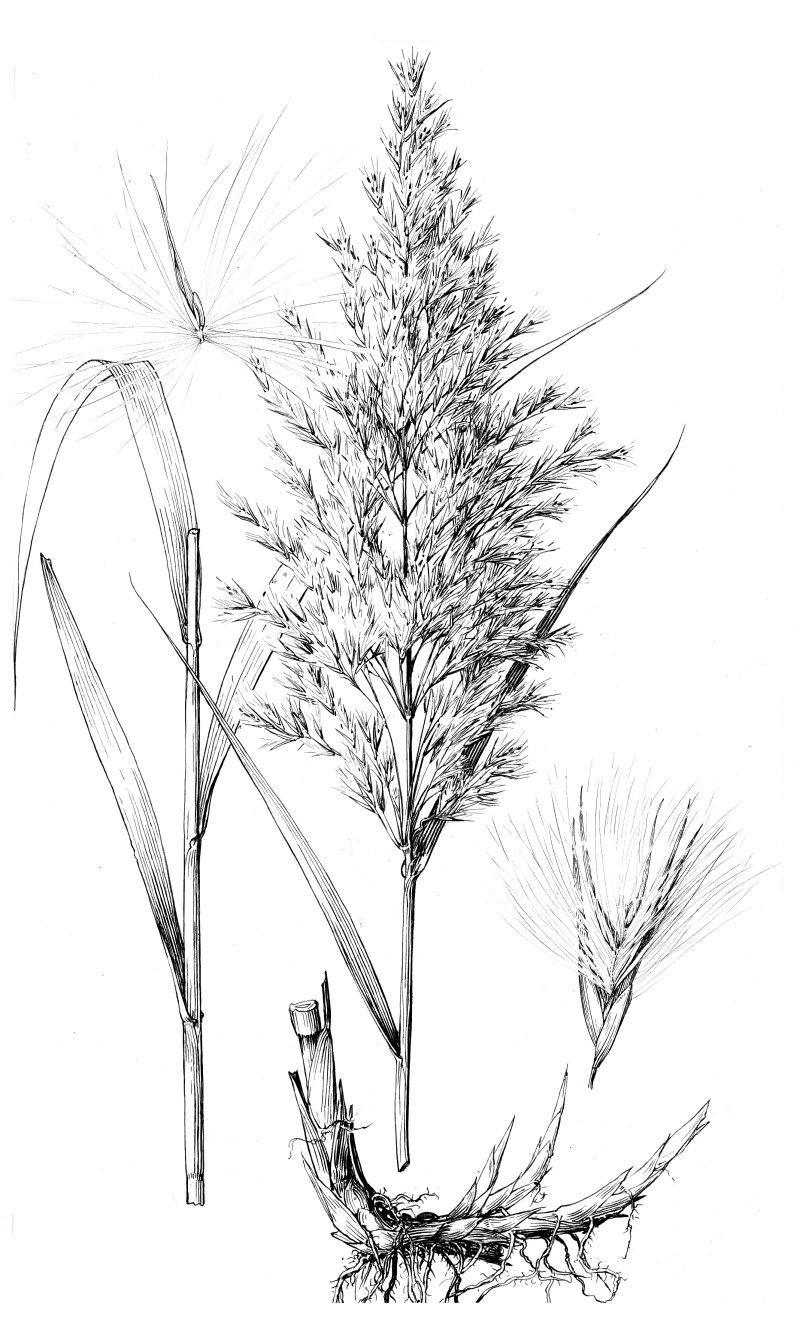
Phragmites australis Trin. Common Reed Habit: Tall perennial with long, stout, creeping rhizomes and often with leafy stolons. Culms: Erect, stout, leafy, 1.5-4 m. tall, glabrous. Blades: 15-40 cm. long, 8-50 mm. wide, flat, glabrous, narrowed and rounded at the base. Sheaths: Overlapping, crowded, loose. Ligule: A ring of very short hairs. Inflorescence: Panicle large, terminal, tawny, 15-40 cm. long, branches ascending, the spikelets numerous on slender, scabrous pedicels, much shorter than the spikelets. Spikelets: Numerous, 12-15 mm. long, 3-several-flowered, the lower flower staminate, the rest perfect; rachilla covered with long silky hairs which exceed the florets, the florets successively smaller; disarticulating above the glumes and at the base of each joint between the florets. Glumes: Unequal, lanceolate, acute, the first 3-4 mm. long, 3-nerved, the second about twice as long but shorter than the florets, often 5-nerved. Lemmas: 10-12 mm. long, narrow, long-acuminate, glabrous, 3-nerved, that of the lowest floret somewhat longer, equaling the uppermost florets, empty or subtending a staminate flower, the other florets perfect. Palea: Hyaline, much shorter than its lemma, 2-keeled. Habitat: Swamps, marshes and in water. August-October. Kansas Range: Widely scattered counties. Synonyms: Phragmites australis (Cav.) Trin. ex Steud. var. berlandieri (Fourn.) C.F. Reed Phragmites communis Trin. Phragmites communis Trin. ssp. berlandieri (Fourn.) A.& D. Löve Phragmites communis Trin. var. berlandieri (Fourn.) Fern. Phragmites phragmites (L.) Karst.